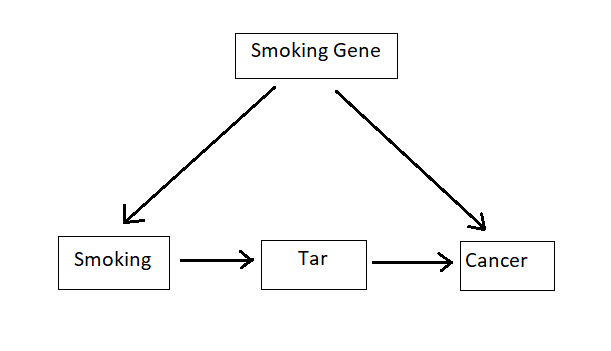I'm reading Judea Pearl's smoking and lung cancer example illustrating the front-door criterion for counterfactual analysis (p. 225 from Pearls' The Book of Why: The New Science of Cause and Effect).
One of the assumptions is the mediator variable measuring tar deposits in subject's lungs is exclusively caused by smoking and no other factors.
This means $P(\text{tar}|\text{no smoking}) = 0$. Wouldn't this constitute a positivity violation, making front-door adjustment impossible?
The same issue arises in front-door adjustment healthcare models where we have Healthcare intervention -> Skill/experience of nurse or doctor -> Health outcome. Those subjects not participating do not receive care from a nurse or doctor. The Skill/experience of nurse or doctor effectively equals 0 for the entire control group.

